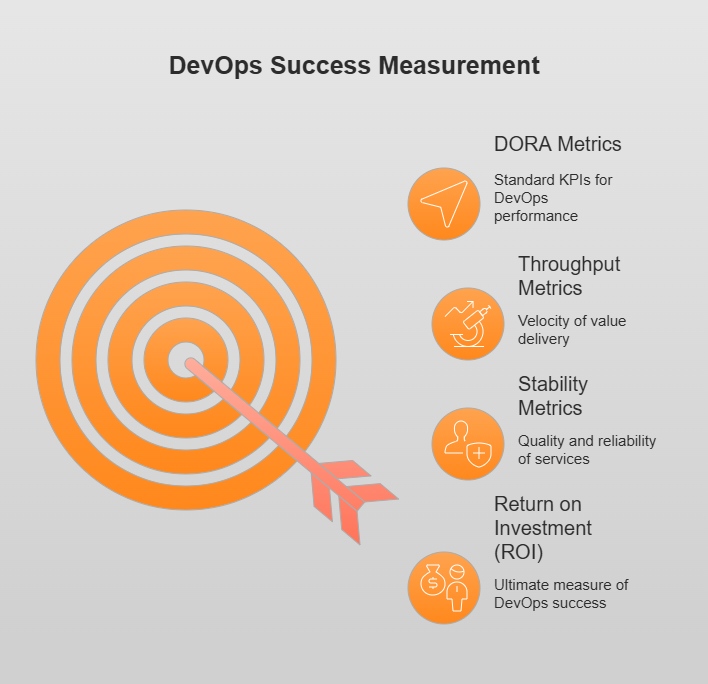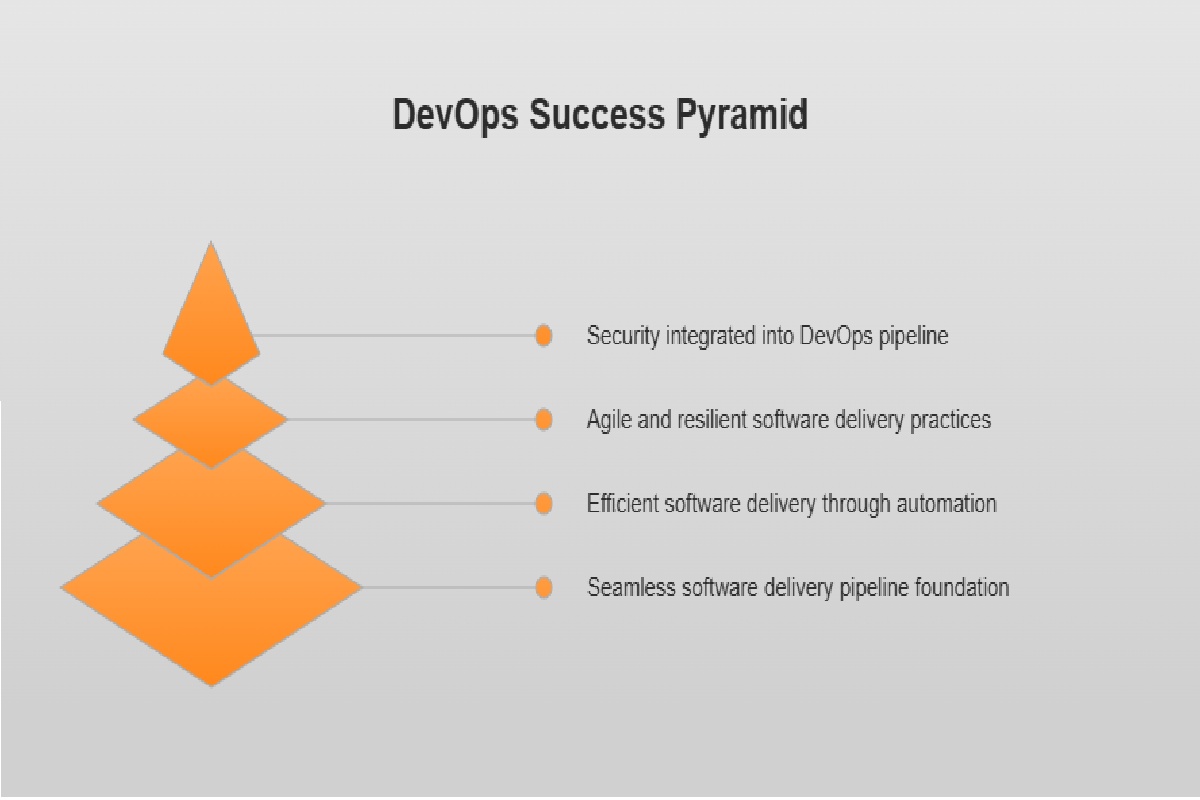In today’s fast-paced digital landscape, large organizations are under immense pressure to innovate faster, improve service reliability, and deliver value to customers more efficiently. This has led to a significant evolution from traditional DevOps practices to a more sophisticated, scaled approach known as Enterprise DevOps. This methodology is not just about tools or teams; it’s a fundamental cultural and operational shift that aligns technology with business goals across an entire organization. This comprehensive guide explores the principles, components, challenges, and strategies necessary to implement enterprise DevOps solutions successfully, transforming how large businesses build, deploy, and manage software.
What is enterprise DevOps?
Enterprise DevOps represents a crucial evolution of the core DevOps philosophy, specifically adapted to meet the unique challenges and complexities of large-scale organizations. While traditional DevOps focuses on breaking down silos between development and operations teams in smaller settings, its enterprise counterpart must address distributed teams, intricate legacy systems, and stringent governance and compliance requirements. It is a holistic strategy that intertwines people, processes, and technology to foster agility, speed, and reliability across the entire business, making it a critical driver of digital transformation and competitive advantage.
Defining DevOps at an enterprise scale
DevOps at an enterprise scale extends beyond simple team collaboration; it is a strategic framework for orchestrating software delivery across multiple business units and complex technological ecosystems. It is defined by three core pillars: automation at scale, which involves automating integration, testing, and deployment processes across diverse platforms; cross-functional collaboration, which bridges the gaps not only between development (Dev) and operations (Ops) but also includes Quality Assurance (QA), security, and key business stakeholders; and robust governance and compliance. This last pillar is especially critical in large enterprises, where ensuring that all software delivery activities adhere to regulatory standards and internal policies must be achieved without sacrificing the speed and agility that DevOps promises. Implementing enterprise DevOps successfully requires a strategic adoption plan that aligns teams, tools, and processes to meet these multifaceted organizational needs.
Understanding the core principles: CALMS and the three ways
The successful adoption of enterprise DevOps is guided by established principles and frameworks that provide a roadmap for cultural and technical transformation. The CALMS model is a foundational framework that defines the five pillars of a healthy DevOps environment: Culture, Automation, Lean, Measurement, and Sharing. This model emphasizes a holistic approach, where a collaborative culture is just as important as the automation tools used. Complementing CALMS is the Three Ways Framework, which outlines a path to continuous improvement. The First Way involves creating fast, left-to-right workflow through systems thinking. The Second Way focuses on amplifying feedback loops from right to left, ensuring that knowledge from operations informs the development process. The Third Way promotes a culture of continuous learning and experimentation, encouraging teams to take calculated risks and learn from failures to foster innovation and resilience.
The business benefits of adopting enterprise DevOps
The strategic implementation of enterprise DevOps delivers tangible business benefits that extend far beyond the IT department. By automating and streamlining the software development lifecycle, organizations can achieve a significantly faster time-to-market for new features and products, allowing them to respond more quickly to customer needs and market changes. This acceleration does not come at the expense of quality. In fact, by integrating testing and quality assurance throughout the pipeline, enterprises see improved software quality and stability, leading to fewer production incidents and enhanced customer satisfaction. Furthermore, the emphasis on collaboration and automation enhances operational efficiency, reduces manual effort, and allows teams to focus on high-value work. This synergy between development and operations teams ultimately drives digital transformation, boosts innovation, and provides a clear competitive edge in the marketplace.
What are the key components of a successful implementation?
A successful enterprise DevOps implementation is built upon a foundation of integrated tools, automated processes, and modern architectural practices. These components work together to create a seamless and efficient software delivery pipeline that is both agile and resilient. From continuous delivery pipelines to infrastructure managed as code, each element plays a vital role in enabling large organizations to deliver high-quality software at speed and scale. Mastering these technical pillars is essential for any enterprise looking to harness the full potential of DevOps.
Building an integrated CI/CD pipeline for continuous delivery
The backbone of any modern DevOps practice is an integrated Continuous Integration and Continuous Delivery (CI/CD) pipeline. Continuous Integration is the practice of developers frequently merging their code changes into a central repository, after which automated builds and tests are run. This process ensures that new code integrates smoothly and that bugs are caught early. Continuous Delivery extends this principle by automatically deploying all code changes to a testing and/or production environment after the build stage. This level of automation is critical for enterprise DevOps, as it automates the build, test, and deployment processes at scale. An integrated toolchain, featuring tools like Jenkins, GitLab CI, GitHub Actions, or Argo CD, is essential for creating these robust, automated pipelines that enable rapid and reliable software releases.
Leveraging infrastructure as code (IaC) and containerization
To achieve true agility and consistency at an enterprise scale, the underlying infrastructure must be as flexible as the software running on it. This is where Infrastructure as Code (IaC) and containerization become indispensable. Infrastructure as Code is the practice of managing and provisioning infrastructure through machine-readable definition files, rather than manual hardware configuration. Tools like Terraform, AWS CloudFormation, and Pulumi allow teams to define their infrastructure in code, which can then be versioned, tested, and deployed automatically, ensuring consistency across all environments. Containerization, primarily through technologies like Docker and Kubernetes, complements IaC by packaging applications and their dependencies into portable, isolated containers. This guarantees that applications run uniformly regardless of the environment, eliminating the “it works on my machine” problem and greatly simplifying deployment and scaling.Automating workflows from development to operations
Automation is a core tenet of enterprise DevOps, applied to eliminate manual, repetitive, and error-prone tasks throughout the software lifecycle. The goal is to automate everything from initial code commits to final production deployment and ongoing operational management. This includes automating environment provisioning, configuration management, testing, security scanning, and even incident response rollbacks. By targeting these manual processes, organizations can dramatically increase efficiency, reduce human error, and free up valuable engineering time to focus on innovation. Tools for Configuration Management such as Ansible, Chef, and Puppet are crucial in this domain, as they automate the configuration of servers and applications, ensuring consistency and compliance across a sprawling infrastructure. This end-to-end automation is what enables enterprises to achieve the speed and reliability promised by DevOps.Integrating security throughout the lifecycle with DevSecOps
In the past, security was often an afterthought, a final gate before deployment that could cause significant delays. DevSecOps fundamentally changes this by integrating security practices directly into the DevOps pipeline, a concept often referred to as “shifting left.” The goal is to make security a shared responsibility of the entire team—development, operations, and security specialists—from the very beginning of the development process. This involves embedding automated security testing, vulnerability scanning, and policy enforcement directly into the CI/CD pipeline. Tools like Snyk, Aqua Security, and SonarQube help automate the detection of vulnerabilities in code and dependencies, while solutions like HashiCorp Vault manage secrets and protect sensitive data. Successfully implementing these practices often requires comprehensive enterprise devops solutions that blend security, automation, and cloud optimization into a cohesive strategy, ensuring that applications are both secure and delivered quickly.
How do you build the right culture and teams for success?
While tools and automation are critical, they are only effective when supported by the right organizational culture and team structures. The human element is the true engine of any successful DevOps transformation. Building a culture of collaboration, shared responsibility, and continuous improvement is paramount. This involves breaking down traditional organizational silos and restructuring teams to optimize workflow and communication, ensuring that people are placed at the core of the transformation.
Fostering cross-functional collaboration
The foundational cultural shift in DevOps is the move away from siloed departments toward highly collaborative, cross-functional teams. In a traditional model, development, operations, QA, and security teams often work in isolation, leading to friction, delays, and a “throw it over the wall” mentality. Successful DevOps adoption requires dismantling these barriers. Building teams that include specialists from each discipline is fundamental to improving workflow efficiency. This structure ensures that operational requirements, quality standards, and security considerations are addressed throughout the development lifecycle, not just at the end. Fostering this level of collaboration requires shared goals, transparent communication channels (supported by tools like Jira, Slack, and Microsoft Teams), and a collective sense of ownership for the product’s success from inception to retirement.
Structuring teams with effective topologies
As organizations scale their DevOps practices, the way teams are structured becomes increasingly important for managing cognitive load and ensuring clear ownership. The Team Topologies model provides a practical framework for organizing teams to optimize workflow and reduce dependencies. It classifies teams into four fundamental types: Stream-aligned teams are focused on a single, continuous stream of work, such as a product or service; Enabling teams assist other teams in adopting new technologies and practices; Complicated Subsystem teams manage components that require deep, specialized knowledge; and Platform teams provide internal platforms that stream-aligned teams can use to deliver their work with autonomy. By thoughtfully combining these topologies, enterprises can create a clear and effective organizational structure that supports fast flow and rapid feedback.
Promoting a culture of continuous learning and shared responsibility
A thriving DevOps culture is one that embraces continuous learning and experimentation. This means creating a psychologically safe environment where teams are encouraged to try new things, learn from their failures without blame, and constantly seek ways to improve. This growth mindset, which is a core component of the Third Way, is essential for innovation and long-term resilience. It involves providing ongoing training and development opportunities for staff to keep their skills current. Equally important is fostering a sense of shared responsibility. In a true DevOps culture, the entire team—not just the operations department—is responsible for the stability and performance of the application in production. This shared ownership model ensures that everyone is invested in delivering a high-quality, reliable product, from the first line of code to the end-user experience.
How can you successfully manage an enterprise DevOps transformation?
Managing a DevOps transformation in a large enterprise is a significant undertaking that requires careful planning, strategic execution, and strong leadership. It’s not a one-time project but a continuous journey of improvement. A successful transformation involves understanding where you are starting from, designing systems that can scale, and knowing when to seek external expertise to guide the process and accelerate progress.
Assessing your current state and DevOps maturity
Before embarking on a large-scale transformation, it is crucial to conduct a thorough assessment of your organization’s current state. This initial audit should evaluate existing workflows, infrastructure, toolchains, and team capabilities to establish a clear baseline. A DevOps Maturity Model can be an invaluable tool in this process, helping enterprises evaluate their current capabilities across various dimensions like culture, automation, and measurement. This readiness assessment provides critical insights into strengths and weaknesses, identifies key areas for improvement, and allows for the creation of a realistic and targeted improvement roadmap. Without this foundational understanding, any transformation effort risks being unfocused and ineffective.
Designing scalable workflows and robust incident management
With a clear understanding of the starting point, the next step is to design workflows and processes that can scale with the organization. This involves integrating development, QA, and operations into aligned, automated pipelines that can support multiple teams and products simultaneously. Establishing, enforcing, and refining best practices are crucial for maintaining consistency, quality, and security across a large-scale environment. Alongside scalable delivery workflows, building a robust incident management process is vital for ensuring reliability. This includes creating a clear incident response plan, designating and empowering incident commanders, and integrating operations with DevOps principles to minimize downtime and improve service quality. A strong incident management practice ensures that when issues inevitably arise, they are resolved quickly and efficiently, with lessons learned fed back into the development process.Getting expert guidance with DevOps transformation consulting
For many large organizations, navigating the complexities of a DevOps transformation can be challenging due to a lack of in-house expertise, entrenched cultural norms, or the sheer scale of the undertaking. In such cases, partnering with a Managed Service Provider (MSP) or an external consultancy can provide the necessary momentum and expertise. Engaging with firms that offer specialized devops transformation consulting can help accelerate the adoption of best practices, from infrastructure design and cloud migration to the automation of deployment and recovery processes. An end-to-end IT partner like Hicron Software, for example, can guide a business from strategic vision through implementation and optimization, leveraging deep industry-specific expertise to ensure a successful outcome. Such partnerships can offer 24/7 support, security and cost optimization, and the strategic guidance needed to overcome internal hurdles.
What are the most common challenges and how do you solve them?
The path to enterprise DevOps is often paved with challenges, from technical hurdles to cultural roadblocks. Large organizations must contend with decades of established processes, complex systems, and the inherent difficulty of coordinating change across thousands of employees. Acknowledging these common challenges and proactively developing strategies to address them is key to a successful and sustainable transformation.
Managing scale and organizational complexity
One of the most significant challenges in enterprise DevOps is managing the sheer scale and complexity inherent in large organizations. With numerous teams, diverse product lines, and intricate dependencies, what works for a small startup can quickly break down. The solution lies in strategic design and abstraction. Utilizing well-architected workflows and a high degree of automation helps standardize processes and reduce cognitive load on teams. The creation of dedicated platform teams is another powerful strategy. These teams build and maintain internal, self-service platforms that provide development teams with the tools and infrastructure they need, allowing them to focus on delivering business value without getting bogged down in operational complexity.Overcoming cultural resistance to change
Technology is often the easiest part of a DevOps transformation; changing people’s habits and mindsets is far more difficult. Cultural resistance is a common and formidable obstacle. Employees may be comfortable with existing processes and skeptical of new ways of working. Overcoming this resistance requires a concerted change management strategy. Strong, visible leadership buy-in is non-negotiable; leaders must champion the change and clearly articulate the “why” behind the transformation. Clear, consistent communication is essential to keep everyone informed and aligned. Starting with small, pilot projects can demonstrate the value of DevOps and create internal champions who can help drive broader adoption across the organization. The culture must be actively nurtured to shift from one of fear and blame to one of collaboration and continuous improvement.Modernizing and integrating legacy systems
Few large enterprises have the luxury of starting with a clean slate. Most must contend with complex, monolithic legacy systems that were not designed for the agility and speed of modern DevOps practices. A “big bang” replacement of these systems is often too risky and expensive. Instead, the most effective approach is one of incremental modernization. This can involve strategies like wrapping legacy systems with APIs to make them more accessible to modern applications. Containerization can be used to package parts of a legacy application, making it easier to deploy and manage in a modern environment. A phased cloud adoption strategy can also help, allowing organizations to gradually migrate services and infrastructure to more flexible, scalable platforms, bridging the gap between legacy systems and modern architectural approaches.
How do you measure the success of your DevOps initiatives?
To justify the significant investment in a DevOps transformation and ensure continuous improvement, it is essential to measure its impact. Tracking the right metrics provides objective evidence of progress, helps identify bottlenecks, and allows teams to make data-driven decisions. By focusing on key performance indicators related to software delivery performance and operational stability, organizations can clearly evaluate the return on their investment.
Tracking key performance indicators (KPIs)
Measuring the effectiveness of enterprise DevOps requires a standardized set of key performance indicators (KPIs) that reflect both speed and stability. These metrics provide a clear, quantitative view of an organization’s software delivery capability. The most widely recognized DevOps KPIs, often referred to as the DORA metrics, include: Deployment Frequency (how often code is deployed to production), Change Lead Time (the time from code commit to production deployment), Mean Time to Recovery (MTTR) (how long it takes to restore service after a production failure), and Change Failure Rate (the percentage of deployments that cause a failure in production). Tracking these KPIs over time provides invaluable insight into the health and performance of the DevOps practice.Focusing on throughput and stability metrics

The core DevOps KPIs can be grouped into two main categories: throughput and stability. Throughput metrics, which include Deployment Frequency and Change Lead Time, measure the velocity at which an organization can deliver value to its customers. A high deployment frequency and a low change lead time indicate an efficient and agile delivery pipeline. On the other hand, stability metrics, such as Mean Time to Recovery (MTTR) and Change Failure Rate, measure the quality and reliability of the services being delivered. A low MTTR and a low change failure rate demonstrate that the team can not only move fast but also maintain a stable and resilient production environment. A successful DevOps initiative improves both sets of metrics, proving that speed and stability are not mutually exclusive goals.Evaluating return on investment (ROI)
Ultimately, the success of any enterprise initiative is measured by its return on investment (ROI). The throughput and stability KPIs are critical because they enable a clear evaluation of this ROI. For example, increased deployment frequency and shorter lead times translate directly to faster delivery of business value and a quicker response to market opportunities. Improved stability, evidenced by lower failure rates and faster recovery times, leads to higher customer satisfaction, reduced operational costs, and minimized revenue loss from outages. By connecting these technical metrics to tangible business outcomes, leaders can effectively demonstrate the value of their DevOps initiatives and justify continued investment in the people, processes, and tools that drive them.
What does the future hold for enterprise DevOps?
The field of enterprise DevOps is continuously evolving, driven by advancements in technology and a deeper understanding of how to build and operate software at scale. As organizations mature in their DevOps journey, new trends are emerging that promise to further enhance efficiency, intelligence, and developer productivity. Looking ahead, the integration of artificial intelligence and the rise of platform engineering are set to redefine the landscape of enterprise software delivery.
The growing role of AI in automation and analytics
Artificial Intelligence (AI) and Machine Learning (ML) are poised to play a transformative role in the future of DevOps, a trend often referred to as AIOps. The integration of AI is set to bring a new level of intelligence and efficiency to the entire software lifecycle. This includes predictive analytics to identify potential issues before they impact production, automated code reviews that can suggest improvements and catch bugs, and smarter incident response systems that can automatically diagnose root causes and even trigger remediation actions. By analyzing vast amounts of data from monitoring and logging systems, AI will help teams move from a reactive to a proactive operational posture, further improving reliability and performance.The rise of platform engineering for self-service infrastructure
As DevOps practices mature within large organizations, a new discipline known as platform engineering is gaining significant traction. The core idea is to create and maintain internal platforms that provide reusable, self-service infrastructure components and tools for development teams. This platform-as-a-product approach allows developers to provision, deploy, and manage their applications with a high degree of autonomy, without needing to be experts in the underlying infrastructure. By providing a “paved road” of standardized tools and automated workflows, platform engineering reduces cognitive load on developers, enforces best practices, and accelerates delivery, enabling an entire organization to scale its DevOps capabilities effectively and consistently.





